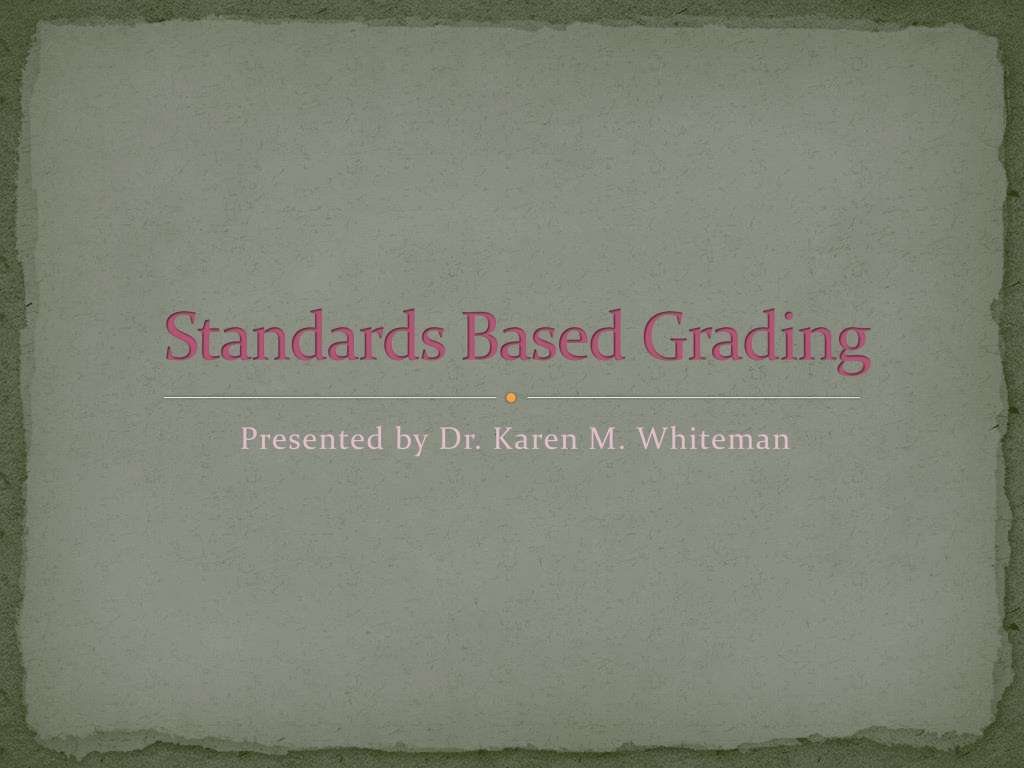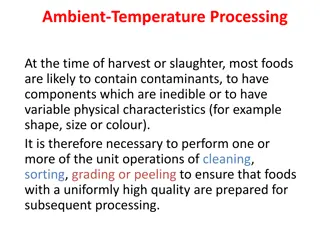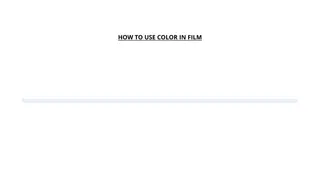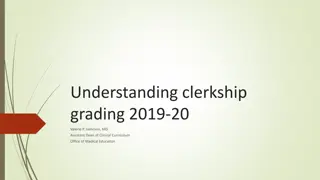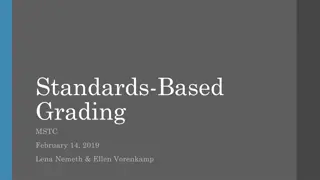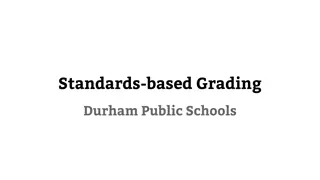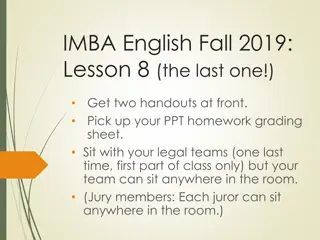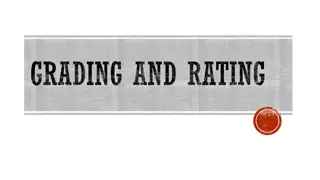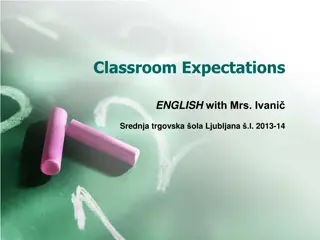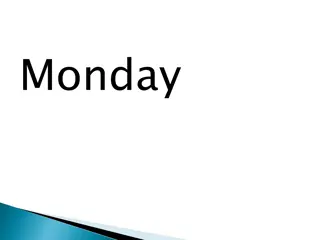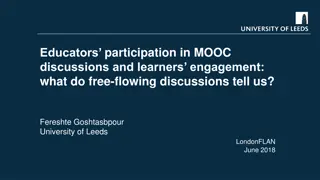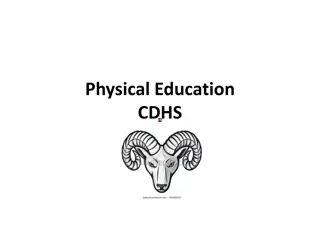Standards-Based Grading for Educators
Learn about Standards-Based Grading (SBG) presented by Dr. Karen M. Whiteman, including the agenda overview, workshop norms, housekeeping items, and the shift needed for transitioning to a standards-based system. Discover the differences between Assessment-Based Grading and SBG, and engage in discussions to deepen your understanding of this educational approach.
Download Presentation

Please find below an Image/Link to download the presentation.
The content on the website is provided AS IS for your information and personal use only. It may not be sold, licensed, or shared on other websites without obtaining consent from the author.If you encounter any issues during the download, it is possible that the publisher has removed the file from their server.
You are allowed to download the files provided on this website for personal or commercial use, subject to the condition that they are used lawfully. All files are the property of their respective owners.
The content on the website is provided AS IS for your information and personal use only. It may not be sold, licensed, or shared on other websites without obtaining consent from the author.
E N D
Presentation Transcript
Standards Based Grading Presented by Dr. Karen M. Whiteman
Agenda Overview of our current grading system Teaching to Standards SBG What is it? Beliefs Rubric Benefits Grading Final thoughts Time for questions
Workshop Norms Cell phones off and away Listen with an open heart and mind Ask questions when you don t understand Limit side bar conversations We will take a break around 1:30 Anything we need to add?
Housekeeping Items The restrooms are located to the left down the hall. I will try to stop for questions periodically, but I want to get everything in so please jot down questions as you have them and hopefully I will get to them at some point. Use a sticky note to leave me questions on the Parking Lot if you like don t forget your name and email so I can answer. Please fill out the evaluation before you leave today and leave it in the center of your table. A little about me
At the end of this session: You will have a deeper understanding of teaching to standards, SBG, and why we are doing it. You will (hopefully) feel more comfortable with SBG. You will be able to answer parent questions about SBG. Hopefully, you will feel positively about it too.
Lets Get Started! Where Are We Now?
Assessment Based Grading Uses a scale of A F or percents Points and extra credit are given Averaging is used Task completion is important It is cumulative Grade book gives information on assignments rather than content. Based mostly on test grades Behavior, punctuality, and other non-academic factors are considered Very subjective Teachers define the criteria can be different teacher to teacher Prior performance is more important than improvement The grade is the grade Students are compared to other students
Moving to a standards based system requires a shift in your thinking and a shift in what takes place inside the four walls of your classroom. Here s to shifting!
First Things First: Teaching to Standards
Teaching to Standards Before we can talk about grading standards, we need to talk about teaching to standards. The standard is the starting point and activities are built from the standard. Every lesson/activity is purposefully done to help students master the skills in the standard. Each lesson taught is connected to a standard, and learning targets along the way mark progress toward meeting the standard. Assessments are planned ahead of time as well and directly relate to the standard. Opportunities to meet learning goals are varied. Students know what standard they are learning and why. I Can statements. The grade book is set up according to standards, not assignments. As the teacher, you need to be well-planned.
Performance standards specify how good is good enough. They relate to issues of assessment that gauge the degree to which content standards have been attained They are indices of quality that specify how adept or competent a student demonstration should be. J. Kendall and R. J. Marzano
Teaching to Standards What do students need to know, understand and be able to do? How will we teach effectively to ensure students learn? How will we know that students have learned? What do we do when students don t learn or reach proficiency?
Teaching to Standards When you teach to standards: students do more of the work of learning students have more opportunities to make their own meaning students realize exactly what they need to learn and be able to do students can take more ownership of and responsibility for their learning students must show you that they have met the standard this is important for a level 4 parents know exactly what their child needs to know and be able to do students and parents will know their strengths and weaknesses
Discuss this with the teachers at your table in relation to teaching to standards.
Group Project In groups of 3 or 4, design 3 activities or lessons and at least 2 assessments for the following standard. Time permitting, groups will report out what you created, any thoughts on the process Grade 2 Standard OA.1 Use addition and subtraction within 100 to solve one- and two-step word problems involving situations of adding to, taking from, putting together, taking apart, and comparing, with unknowns in all positions, e.g., by using drawings and equations with a symbol for the unknown number to represent the problem.
Teaching to Standards You need to see the larger picture. You need to focus both on process as well as product/outcomes. The standards are your benchmarks. Think about how you are going to assess the standard as you are planning. Know what your assessments are before you start teaching. I recommend that you look over the modules and use them. Know which standards will reappear later in the year . Planning sheets may be helpful.
Teaching to Standards I recommend doing a longer-range plan and then transferring the activities on to your daily lesson planner. This will allow you to see the bigger picture. Suggestions to include: Subject area Standard(s)/Module # Career Ready Standard(s) CCS Shift: CCS Vocabulary Activities/Lessons for before, during, and re-teaching (consider scaffolding and differentiating) Assessments/Observations
What is SBG? Discuss this at your table.
Standards Based Grading SBG is a model of grading which uses a rubric system (1, 2, 3, 4) and is based solely on what the students know and can do. Standards-Based Grading is a refined way of reporting what students know and how they demonstrate their learning of state content standards (Aurora Public Schools in Colorado). SBG is derived from outcomes-based educational practices. A criterion is set up for standards of what every student or child is expected to know (learning), and a score is set compared to these benchmarks rather than a ranking compared to a norm (paraphrased from Wikipedia). SB grades are used as tools to communicate a student s progress and reflect the student s level of knowledge (Mount Vernon Public Schools).
Standards Based Grading Introduction
Standards Based Grading Beliefs We use SBG to help us improve student achievement by focusing instruction on standards what do we want students to know and be able to do? A grade represents a valid and undiluted indicator for what a student knows and is able to do. (Rick Wormeli). The primary purpose of a grade is to communicate student academic achievement. Learning is a dynamic process that generally results in deeper understanding as time progresses.
The Rubric Level 4 The student can independently and consistently use the knowledge in new ways and in different contexts (transfer). The student may know more than what the standard requires, but this is not always the case - student answers may be more creative, detailed, in depth, and/or sophisticated. Depending on the standard, it may mean that all questions were answered correctly. If a 4 is given for a quarterly/final grade, the student has mastered grade level expectations independently and most grades on the standards taught are 4s. The student is well prepared for the next grade level and will probably need acceleration and enrichment. Exceeds, above grade level
Level 4 Frequency of behavior all or almost all of the time Requires no support to demonstrate understanding Demonstrates a thorough understanding of the content taught Makes no errors or omissions when demonstrating concepts or processes.
The Rubric Level 3 This is what we expect of our students. We celebrate and praise 3s!!! The student can independently and consistently demonstrate the standard to expectations. However, the student does not have the level of proficiency, sophistication, transfer, and/or application required for a level 4. If the quarterly/final grade is a 3, the student has mastered grade level standards and is ready for the next grade level. However, there may be a few standards that have not been mastered. Meets expectations, on grade level
Level 3 Frequency of behavior most of the time Requires no or limited support to demonstrate understanding Demonstrates a general understanding of the content taught Makes a few errors or omissions when demonstrating concepts or processes
The Rubric Level 2 The student cannot independently demonstrate the skill or standard consistently; teacher/adult support and assistance is needed. NYS says meeting basic standards . If a 2 is given as a quarterly/final grade, the student is not mastering many/most grade level standards independently. The student may not ready for the next grade level and will most likely need some additional support and strategies to be successful. Approaching, performing inconsistently
Level 2 Frequency of behavior some of the time Requires moderate support to demonstrate understanding Demonstrates a partial understanding of the content taught Makes some errors or omissions when demonstrating concepts or processes
The Rubric Level 1 The student cannot either independently or with support demonstrate the skills in the standard. If a 1 is given as a quarterly /final grade, the student is not mastering grade level standards and most grades on the standards are 1s. This student is definitely not ready for the next grade level and will need intensive support and strategies to make growth. This student may also require referral for special education testing if other strategies aren t working. Emergent, developing, below grade level
Level 1 Frequency of behavior seldom or never Requires considerable support but rarely demonstrates learning Demonstrates limited to no understanding of the content taught Makes frequent errors or omissions when demonstrating concepts or processes
Olivia's Explanation of the Rubric
The Rubric in Kid Friendly Language Level 4 I ve got it and I can use it! I can even tell you more about it! Level 3 I ve got it! Level 2 I need some help with this! Level 1 I just don t get it!
StBSs ERC Rubric Level 4 Your child is exceeding expectations for this standard or subject and can demonstrate the knowledge independently, consistently, and in new contexts. Level 3 Your child is meeting expectations for this standard or subject independently. Level 2 Your child is only meeting basic standards and is not meeting expectations for this standard or subject independently or consistently. Teacher support is needed. Level 1 Your child is not meeting expectations for this standard or subject independently or with teacher support.
Benefits of SBG The grades are more meaningful and clearer. What does an 85 tell you? What does a 3 tell you? All students have the opportunity to earn a 4 (high grade). Parents will know exactly what is being taught and how their child is doing on those skills. We can focus more on quality because rubrics are used. Specific feedback must be written on graded work. There is a focus on mastery while giving students time to learn. Less subjective Allows for more consistency across grade levels
No studies support the use of low grades or marks as punishments. Instead of prompting greater effort, low grades more often cause students to withdraw from learning. T. R. Guskey and J. Bailey
Benefits of SBG The standards are listed on the report card. You can have more focused and clear conversations with parents because the grades are based on standards. The grades are based only on what students know and can do. Grades are never used as punishment. No zeros ever! A child s strengths and weaknesses are very evident to parents and teachers. Students earn the grade that they should earn based on their knowledge. Nothing else clouds the grades extra credit, behavior, bad handwriting, etc. It allows students to shine and show talents that are hidden in our current grading system.
The appropriate consequence for failing to complete an assignment is completing the assignment. That is, students lose privileges, free time, and unstructured class or study hall time, and they are required to complete the assignment. The price of freedom is proficiency D. B. Reeves
Benefits of SBG Extra credit is not necessary. Formal and informal assessments are referred to as opportunities for students to demonstrate their learning and mastery. Averaging is not needed. Grading on a curve is not necessary (norm referenced). More student buy in. It more accurately represents real world experience meeting standards, having time to improve. It makes us rethink consequences. Not cumulative Grades are individual. The grades are a more accurate picture of the student s current abilities and mastery.
Teachers turn things in late all the time, as do workers in every profession. The idea that you can t get away with turning work in late in the real world isn t true. R. Wormelli
Grading in a SB System Standards
Evaluation experts stress that if you are going to make important decisions about students that have broad implication, such as decisions involved in grading, then you must have good evidence In the absence of good evidence, even the most detailed grading and reporting system is useless. T. R. Guskey and J. Bailey
Grading Examples - Standards Level 4 The standard says the student should be able to write a summary of a book/story that was read. What would a level 4 response look like? A level 4 response could have the following characteristics: longer, more detailed, perfect/near perfect grammar, conventions, and spelling, creativity, incorporates prior learning, deeper vocabulary, correct structure, well organized, invokes feelings in the reader, connects with the reader, audience is acknowledged and known, sophisticated and varied sentence structure. The answer demonstrates skills that possibly have not been taught yet and the answer is better than what is expected at this time in the year. The standard says the student should be able to count to 20. What would a level 4 response look like? A level 4 response could be that the student can count to a much higher number and can manipulate the numbers while counting by using skip counting, starting from different numbers, counting backwards, etc. The student can also apply counting to 20 to solve problems and can explain his/her thinking and strategies when doing so.
Grading Examples - Standards Level 3 The standard is to count to 30. What would a level 3 look like? The student can do this independently. The student may be able to count a bit higher, but transfer to other settings and the use of the skill in different ways is not present. The response is what we expect. The standard is to explain the difference between 2 characters. What would a level 3 look like? The student can do this, but the answer does not have the detail, clarity, accuracy, creativity, and/or depth of a Level 4 response.
Grading Examples - Standards Level 2 The standard is to name 4 characteristics of a triangle. What would a level 2 look like? The student can t do this without teacher/adult support or can only name one or two without support. The standard is to state 3 characteristics of a non-fiction book. What would a level 2 response look like? The student can only list 1 or 2 on their own and needs help to list 3.
Grading Examples - Standards Level 1 The standard is to use addition to solve problems. What would a level 1 response look like? The student cannot do this either independently or with support. Reteaching, time for practice, extended support, and differentiated strategies are needed.
More Grading Examples Standards Johnny performs at a level 2 the first time. He is assessed again, and again performs at a level 2. The teacher will keep reteaching and assessing to help him be able to perform at a level 3. However, if it is report card time, he may have a 2. Once he consistently earns a 3 though, the 2 is replaced. Sara performs at a level 2 the first two times she is assessed. However, on the third assessment, she performs at a level 3. The teacher may either accept this or assess her one more time just to make sure she truly has it.
